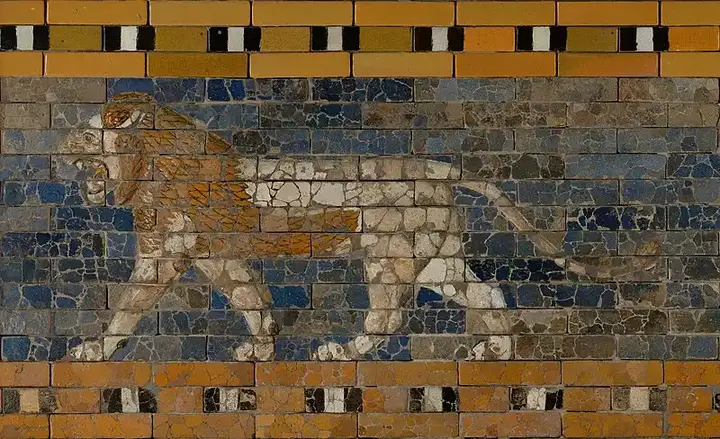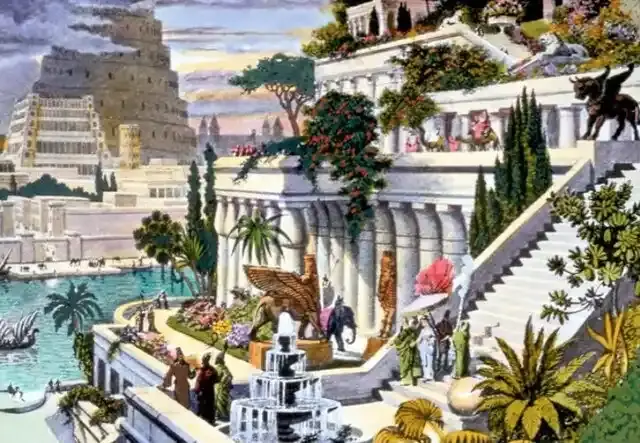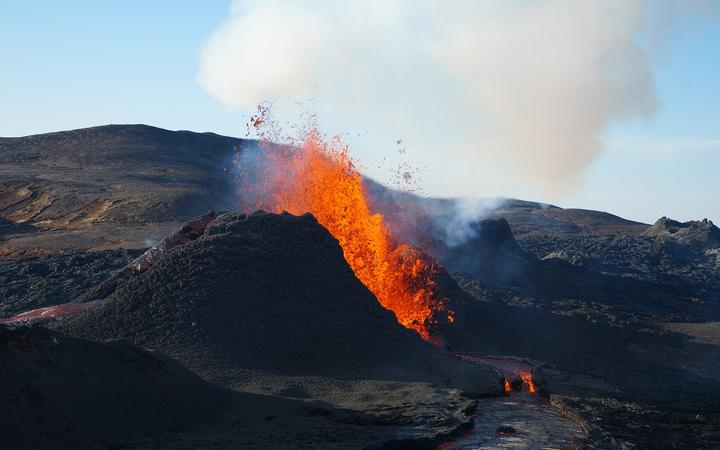Babylon... The empire engraved in the memory of history
Babylon is the most famous city of ancient Mesopotamia whose ruins lie in modern Iraq 59 miles (94 km) southwest of Baghdad. The name derives from "Bab-El" or "Bab-Elim", which in Akkadian means "door of God" (or "door of the gods"), and was called "Babylon" in Greek. At that time, Babylon was a great cultural and religious center.
Show key points
- Babylon, once a small port on the Euphrates River, rose to prominence under Hammurabi who transformed it into the capital of a vast empire.
- The city is historically significant as the location of the Hanging Gardens, one of the Seven Wonders of the Ancient World.
- In religious texts, Babylon is portrayed negatively in the Bible and Quran, symbolizing corruption, power, and divine punishment.
- ADVERTISEMENT
- The Code of Hammurabi, a major legal achievement, demonstrates Babylon's early advancement in law, governance, and diplomacy.
- Despite numerous conquests by Hittites, Kassites, Persians, and eventually the Arabs, Babylon maintained its importance through trade and culture.
- Babylon was admired by Greek and classical historians such as Herodotus for its immense walls, architecture, and urban planning.
- Rediscovered and excavated in the modern era, Babylon today is a UNESCO World Heritage Site symbolizing ancient achievement and eternal legacy.
The Greeks' vision of the city of Babylon

The city of Babylon had great sanctity in the books of Greek historians, as Babylon was referred to with awe by ancient Greek writers and Babylon was the site of the Hanging Gardens of Babylon, one of the seven wonders of the ancient world.
Babylon in the Torah and the Bible
Many negative references to Babylon came in the Bible starting with Genesis 11:1-9 and the story of the Tower of Babel associated with the ziggurat of Babylon, Babylon also appears negatively in the books of Daniel, Jeremiah, and Isaiah, and the most famous is what is mentioned about Babylon in the Book of Revelation. Researcher Paul Krywachik points out that Babylon earned its evil reputation because of the Bible." Although none of these accounts speak well of Babylon, they were ultimately responsible for their modern-day fame, leading to their rediscovery by German archaeologist Robert Coldeway in 1899.
Recommend
Babylon in the Holy Quran
Babylon is mentioned once in the Qur'an when it comes to talking about demons teaching the people of Babylon the ways of magic that they learned from the descending kings from heaven Harut and Marut. Therefore, we see that the heavenly books agreed in some way on the specificity of the historical events in Babylon, regardless of the critical view of those events.
Babylon the Great .... The Beginning
Babylon was founded sometime before the reign of Sargon the Great of Akkadian (2334–2279 BC) and seems to have been a small coastal city on the Euphrates until the rise of Hammurabi (1792–1750 BC), which made it the capital of his Babylonian Empire. After Hammurabi's death, his empire soon collapsed. Babylon was captured by the Hittites in 1595 BC and then captured by the Kasids (or Kassites) who renamed it Karandoniash.
Chaldean and Assyrian rule of Babylon

In the early ninth century BC the Chaldeans briefly ruled Babylon, then their name became synonymous with the Babylonians of later Greek writers (notably Herodotus) and biblical scribes, and then controlled by the Neo-Assyrian Empire (912-612 BC) before being taken by Nebuchadnezzar (626-605 BC), who founded the Neo-Babylonian Empire.
Persian control of Babylon
Babylon fell to the Persians under Cyrus II the Great (550-530 BC) and was the capital of the Achaemenid Empire (550-330 BC) until it fell to Alexander the Great in 331 BC. Babylon continued as a trading center under the later Seleucid Empire (312–63 BC), the Parthian Empire (247 BC to 224 AD), and the Sassanid Empire (224–651 CE) but never reached the glory it knew during the reign of Hammurabi or the new Babylonian king Nebuchadnezzar II (605/604–562 BC). The Arab-Islamic conquest of Babylon began in the seventh century AD with the fall of the Persian kingdom at the hands of the Muslim Arab conquerors.
The oldest written trace of Babylon
The first mention of the city of Babylon comes in an inscription from the time of Sargon of Akkadian. Babylon seems to have been a small coastal city on the river but abundant trade by this time. Under the later Akkadian king Char Kali Shari (2223-2198 BC), two temples were recorded to have been built in Babylon, and later fell under the control of the city of Casallo until it was liberated by the Amorite king Sumo Abom (1895 BC), one of the first founders of the first dynasty of kings in Babylon. The city was still a small port at the time, overshadowed by neighboring countries.
Babylon's attack on Larsa
In 1812 BC, the Lutte of Babylon intensified and attacked the most powerful neighboring city, the city of Larsa, but was defeated. The Babylonian king Sin-Mobalt was forced to abdicate in favor of his son Hammurabi, who quietly submitted to the king of Larsa and was busy strengthening the walls of Babylon, beautifying the city, building an army and training it in secret. Ordered by the king of Larsa, Hourabi gathered soldiers for him to repel the attack of the Elamites and Hammurabi complied with his orders, but once the area was secured, he captured the cities of Isin and Uruk from Larsa, formed alliances with Lagash and Nippur, and conquered Larsa completely. He then continued his campaigns, enacted laws, conquered Mesopotamia, and established his empire.
Babylon and the Code of Hammurabi

The Code of Hammurabi was well known among neighboring countries, but it is just one example of the policies he implemented to maintain peace and encourage prosperity. He widened and raised the city walls, engaged in large public works, which included temples and lavish canals, and made diplomacy an integral part of his administration.
Hammurabi was so successful in both diplomacy and war that by 1755 BC, he had united all of Mesopotamia under the rule of Babylon which was, by this time, a major city and the largest city in the world with a population of over 100,000. The city was so powerful and famous after the invasions of Hammurabi that all of southern Mesopotamia came to be called Babylon.
The collapse of Babylon and the rise of the Assyrians
After Hammurabi's death, his empire collapsed and Babylon's size and scope diminished until Babylon was easily captured by the Hittites in 1595 BC. The Cassis followed the Hittites and renamed the city Karandoniash. Sometime between the fourteenth and ninth centuries BC, the Great Ziggurat of Babylon was built which later became associated with the Tower of Babel. It is believed that this association was misinterpretedThe word "pav-el" from the Akkadian language, which means "gate of the gods" was interpreted in Hebrew as "bavel" which means confusion and confusion.
Description of Babylon the Great in the books of historians
Ancient writers (except the biblical scribes) glorified the city of Babylon and referred to it with awe in describing the great ziggurat symbolizing the "foundation of heaven and earth," the enormous walls, the Ishtar Gate, and the hanging gardens of Babylon. Herodotus comments on the size of the city of Babylon:
"Babylon is located in a wide plain, which is square in shape, with a length of one hundred and twenty playgrounds in each direction, so that the whole arena is four hundred and eighty playgrounds. Besides its huge size, it is not even close to any other city. It is surrounded by a wide and deep moat, full of water, behind which rises a wall fifty cubits wide and two hundred high."
Rediscovering the Great Babylon
Babylon was known only through biblical accounts and classical Greek writers until it was rediscovered in the seventeenth and eighteenth centuries, as European travelers began to explore the region and returned home with various artifacts of interest. In the nineteenth century, European museums and institutes of higher learning, hoping to find archaeological evidence of biblical narratives, sponsored numerous expeditions to the region that discovered many of the greatest monuments of Mesopotamia; among them Babylon, the once-great gate of God. In the eighties, restoration attempts were made under President Saddam Hussein, including the reconstruction of the Ishtar Gate (the actual gate currently housed in the Pergamon Museum in Berlin, Germany). In 2019, the ruins of the great city were declared a UNESCO World Heritage Site.
The great symbolism of Babylon in the Torah and the Bible
Many commentators of the Torah and the Bible point out that the great Babylon symbolizes an unjust world power and that its destruction by biblical description has not yet happened, but it will come as an end to its injustice to other nations, and many commentators have linked many unfulfilled prophecies that that world power is the United States and that there are some references to something like nuclear strikes that will be directed at it by another nation that was its ally at first and then angry at it.
These commentators cite that Babylon was often referred to as the great city, which ancient commentators assumed was ancient Babylon. Regardless of how accurate these interpretations are, Babylon remains in the memory of history even thousands of years after its end and demise, which shows how great the impact it left on the souls of other nations and even on the souls of its enemies in the past.
![]()
Rare Roman ruins in Timgad Algeria
Timgad, a stunning Roman ruin in Algeria, feels like stepping into ancient times with its well-preserved streets, grand baths, and rare Roman public library. Built by Emperor Trajan in 100 AD, its beauty, history, and remote mountain setting make it a highlight for anyone who loves exploring old cities. more- ADVERTISEMENT
![]()
5 electronic games to develop your skills and intelligence
Discover how video games like SimCity, Stardew Valley, and Gorogoa can sharpen your mind, boost creativity, and help with planning and decision-making—all while having fun. Not all games are just for play; some are powerful tools for personal growth and learning. more- ADVERTISEMENT
![]()
Arabian Desert: What's there to see there?
The Arabian Desert, home to the vast Empty Quarter, is one of the world's driest and hottest places. In Dubai, desert safaris offer thrilling adventures like dune bashing, quad biking, sandboarding, and camel rides—topped off with starlit camping, music, and delicious food for a truly unforgettable experience. more- ADVERTISEMENT
![]()
The cave beneath Pembroke Castle and the fate of the early Britons
A hidden cave beneath Pembroke Castle has revealed ancient secrets, including animal fats and tools that trace the journey of early Britons from hunters to farmers. This incredible find brings new light to prehistoric life and the evolving habits of those who lived beneath the castle centuries before it was built. more- ADVERTISEMENT
![]()
The mysterious abandonment of Cahokia: The Lost City of Ancient America
Once a bustling hub near the Mississippi River, Cahokia was North America's largest pre-Columbian city, known for its massive Monks Mound and smart urban planning. By the 14th century, it was mysteriously abandoned, leaving behind ruins that still intrigue archaeologists and visitors today. more- ADVERTISEMENT
![]()
The splendor of nature and the challenge of conditions in the oasis of Taghit in western Algeria
Taghit is a hidden gem in western Algeria, where golden dunes meet ancient history. Adventure seekers can sandboard down towering dunes, explore mysterious caves, or discover 20,000-year-old rock carvings. The ancient walled city of Kassar, once forgotten, is now being restored to its former glory. more- ADVERTISEMENT
![]()
LI-FI: where the Internet travels at the speed of light
LI-FI, created in 2011 by Prof. Harald Haas in Scotland, uses light instead of radio waves for data transfer. It offers ultra-fast speed and strong security, making it ideal for sensitive environments. Despite its promise, challenges like high costs and dependency on constant lighting limit its widespread use. more- ADVERTISEMENT
![]()
The history of the city of Samarra ... Iraq's Hidden Gem
Samarra, once a grand Abbasid capital, still stands with its iconic spiral minaret and rich Shia heritage. Though chosen as the capital of Islamic civilization in 2020, the city remains dusty and neglected, holding untold stories within its historic ruins. more- ADVERTISEMENT
![]()
The human heart shows signs of aging after just one month in space
Heart tissue sent to space by Johns Hopkins scientists showed weakened contractions, slower beats, and aging-like changes within a month. The "Heart on a Chip" study reveals how microgravity affects heart health, offering clues for astronaut safety and potential treatments for heart conditions back on Earth. more- ADVERTISEMENT
![]()
The Power of Nature: Learn about the forces behind a living volcano
Living volcanoes are powerful natural wonders—windows into Earth’s fiery depths. They dazzle with beauty, yet threaten with eruptions. From shaping landscapes to offering geothermal energy, they reveal nature’s immense force. By studying their behavior, we can better predict their eruptions and harness their energy for a safer, sustainable future. more- ADVERTISEMENT





















